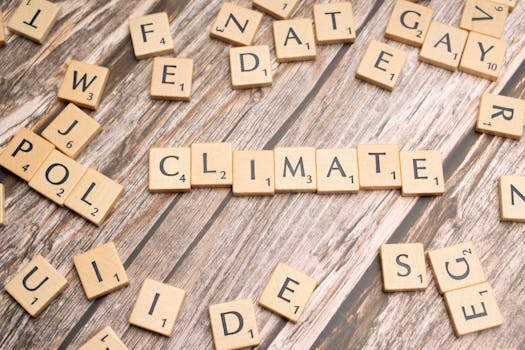
The role of satellites in global weather forecasting systems is a vital component in predicting weather patterns and storms. Satellites have revolutionized the field of meteorology, enabling scientists to monitor the atmosphere, oceans, and land surfaces from space. With the help of satellites, weather forecasting has become more accurate, and the warning time for severe weather events has increased, saving countless lives and reducing damage to infrastructure.
Satellites in orbit around the Earth provide a global perspective on the atmosphere, allowing scientists to track large-scale weather patterns, such as high and low-pressure systems, fronts, and storms. Geostationary satellites, situated approximately 36,000 kilometers above the equator, provide continuous observations of the same region, while polar-orbiting satellites, which pass over the Earth’s polar regions, offer a more detailed view of the atmosphere and oceans. These satellites carry a range of instruments, including cameras, spectrometers, and radar systems, which collect data on atmospheric conditions, such as temperature, humidity, and cloud cover.
In addition to providing data on current weather conditions, satellites also help scientists to predict future weather patterns. By analyzing data from satellites, scientists can identify trends and patterns in the atmosphere, such as the movement of weather systems and the formation of storms. This information is used to create forecast models, which are run on powerful computers to generate predictions of future weather conditions. The use of satellite data in forecast models has significantly improved the accuracy of weather forecasts, particularly for short-term predictions.
One of the most significant benefits of satellites in weather forecasting is the ability to monitor severe weather events, such as hurricanes, typhoons, and tornadoes. Satellites can track the movement and intensity of these storms, providing critical data for warning systems and emergency response efforts. For example, during Hurricane Katrina in 2005, satellites provided essential data on the storm’s track and intensity, allowing authorities to evacuate people from the affected areas.
Satellites also play a critical role in monitoring climate change. By collecting data on long-term trends in atmospheric conditions, such as temperature and sea level rise, satellites help scientists to understand the impacts of climate change on the environment. This information is used to develop strategies for mitigating and adapting to the effects of climate change, such as reducing greenhouse gas emissions and implementing measures to protect communities from the impacts of sea level rise.
In conclusion, the role of satellites in global weather forecasting systems is vital. Satellites provide essential data for predicting weather patterns and storms, and their use has significantly improved the accuracy of weather forecasts. As technology continues to advance, the capabilities of satellites will only continue to grow, enabling scientists to better understand the atmosphere and provide more accurate predictions of future weather conditions.
Furthermore, the use of satellites in weather forecasting has many benefits, including improved warning times for severe weather events, better monitoring of climate change, and more accurate predictions of weather patterns. As the demand for accurate weather forecasts continues to grow, the importance of satellites in global weather forecasting systems will only continue to increase.
It is also worth noting that the integration of satellite data with other sources of data, such as radar and weather stations, has significantly improved the accuracy of weather forecasts. This integration has enabled scientists to create more detailed and accurate forecast models, which are used to predict a wide range of weather phenomena, from short-term weather patterns to long-term climate trends.
In addition, the development of new satellite technologies, such as hyperspectral imaging and advanced radar systems, is expected to further improve the accuracy of weather forecasts. These new technologies will provide even more detailed data on atmospheric conditions, enabling scientists to better understand the complexities of the atmosphere and provide more accurate predictions of future weather conditions.
Overall, the role of satellites in global weather forecasting systems is critical, and their use has revolutionized the field of meteorology. As technology continues to advance, the capabilities of satellites will only continue to grow, enabling scientists to better understand the atmosphere and provide more accurate predictions of future weather conditions.
The use of satellites in weather forecasting has also led to the development of new applications and services, such as weather forecasting apps and emergency alert systems. These applications and services provide critical information to the public, enabling them to make informed decisions about their daily activities and to stay safe during severe weather events.
In terms of the future of satellite-based weather forecasting, there are many exciting developments on the horizon. For example, the launch of new satellite constellations, such as the European Space Agency’s Meteosat Third Generation and the National Oceanic and Atmospheric Administration’s (NOAA) Geostationary Operational Environmental Satellite (GOES) series, will provide even more detailed and accurate data on atmospheric conditions.
Additionally, the development of small satellites, also known as CubeSats, is expected to further improve the accuracy and frequency of weather forecasts. These small satellites are relatively inexpensive to launch and can be used to gather data on specific weather phenomena, such as hurricanes and tornadoes.
In conclusion, the role of satellites in global weather forecasting systems is vital, and their use has significantly improved the accuracy of weather forecasts. As technology continues to advance, the capabilities of satellites will only continue to grow, enabling scientists to better understand the atmosphere and provide more accurate predictions of future weather conditions.